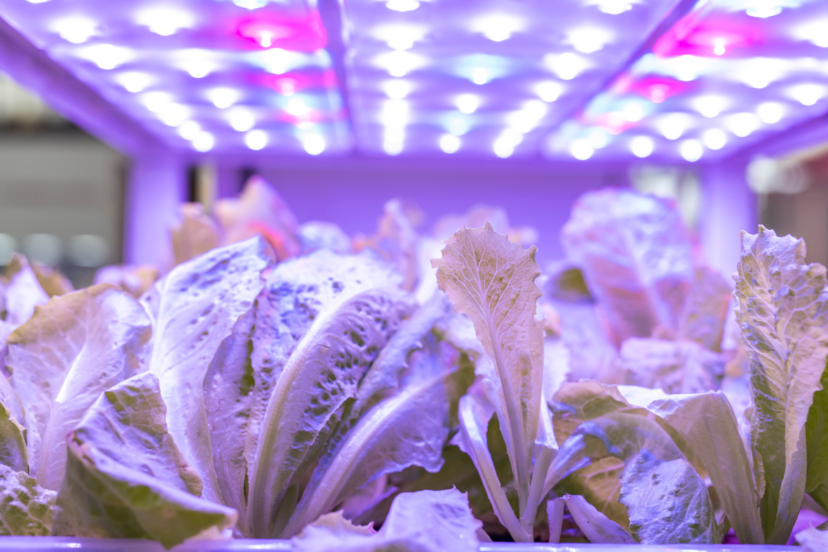Hydroponic Grow Lights: An Introduction
Often it is necessary to add hydroponic grow lights to our systems because it is not possible to locate our plants for optimal natural lite. Hydroponics, the art of growing plants without soil, relies heavily on the right balance of nutrients, water, and crucially, light. The absence of natural soil in hydroponics elevates the importance of artificial light sources, known as grow lights. These lights mimic the spectrum of sunlight, providing essential energy for photosynthesis, even in indoor or controlled environments.
Types of Hydroponic Grow Lights
- LED Lights: LEDs are increasingly popular in hydroponic setups due to their energy efficiency and longevity. They emit a spectrum of light conducive to plant growth and can be customized for different growth stages.
- Fluorescent Lights: These are ideal for beginners due to their affordability and effectiveness for a wide range of plants. Fluorescent lights emit a broad light spectrum, suitable for seedlings and vegetative growth phases.
- High-Intensity Discharge (HID) Lights: HIDs are powerful and cover larger areas. They come in different types, like Metal Halide (MH) for vegetative growth and High-Pressure Sodium (HPS) for flowering.
Choosing the Right Grow Light for Your Hydroponic System
Selecting the appropriate grow light involves considering factors such as the type of plants you’re growing, the phase of growth, and your budget. The light intensity and spectrum are crucial for photosynthesis and influencing plant characteristics like size, taste, and growth speed. Energy efficiency and cost are also significant considerations, especially for large-scale or long-term setups.
Benefits of Using Grow Lights in Hydroponics
Grow lights enable enhanced plant growth by providing consistent and optimal light conditions. They allow for year-round cultivation, unaffected by external weather conditions, and give growers control over plant development, leading to healthier, more robust plants.
Challenges in Using Hydroponic Grow Lights
Despite their benefits, grow lights come with challenges such as managing energy consumption and heat output. Understanding the light spectrum and timing is also critical, as different plants require different light conditions at various growth stages.
Setting Up Your Hydroponic Grow Lights
Setting up grow lights involves more than just installation. Positioning and angling the lights correctly ensures even light distribution, and scheduling the lights mimics the natural day-night cycle, crucial for plant health.
Maintaining Your Hydroponic Grow Lights
Routine maintenance of grow lights is essential. This includes regular checks, cleaning, and timely replacement of bulbs or components. Troubleshooting common issues early can prevent bigger problems down the line.
Advanced Techniques in Hydroponic Lighting
Exploring advanced techniques like light cycling, where the light spectrum is altered during different growth stages, can significantly enhance plant growth. Automating light systems can also bring efficiency and consistency to the growing process.
Tips for Beginners in Hydroponic Lighting
For beginners, I recommend starting small and observing how different plants respond to light conditions. Continuously learning and adapting your approach is key to successful hydroponic gardening.
The Future of Hydroponic Grow Lights
The future of hydroponic grow lights is bright, with technological advancements focusing on energy efficiency and sustainability. These advancements play a crucial role in addressing global food security challenges.
Resources for Further Learning
There are numerous resources available for those interested in deepening their knowledge of hydroponic grow lights, including books, online communities, and workshops.
Conclusion
Hydroponic grow lights are more than just a substitute for sunlight; they are a transformative tool for modern gardening. Whether you’re a beginner or an experienced grower, the right grow light setup can be a game-changer in your hydroponic journey.
FAQs
What’s the best type of hydroponic grow light for beginners?
Fluorescent lights are often recommended for beginners due to their affordability and broad spectrum, ideal for various plant types.
How often should I replace my hydroponic grow lights?
The replacement schedule depends on the type of light. For instance, LEDs last longer than fluorescents. Generally, lights should be replaced when you notice a significant decrease in brightness or changes in plant growth patterns.
Can hydroponic grow lights be used for all plant stages?
Yes, but it’s crucial to adjust the light spectrum and intensity based on the plant’s growth stage for optimal results.
Are hydroponic grow lights energy-efficient?
LED grow lights are highly energy-efficient compared to traditional lighting systems, making them a cost-effective choice in the long run.
How do I know if my plants are getting enough light?
Observing your plants is key. Signs of insufficient light include leggy stems, pale leaves, and slow growth. Adjusting the duration and intensity of the light can rectify these issues.




